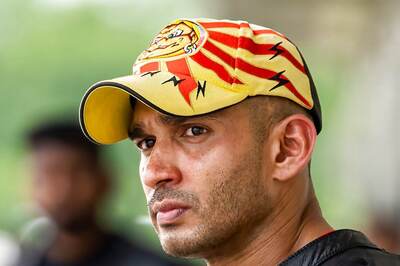
views
Ratan Tata met an extremely select group of senior editors before he unveiled the Nano at the Auto Expo. This remains the most detailed interaction he has had with journalists since the Nano hype hit the global buzzwire and sent it spinning into a frenzy. This story is a part of a seven-part special leading up to the launch of the Tata Nano.
It seems the seed that will blossom into the Nano was sown years and years ago in Kolkata (then, Calcutta), when Mr Tata would use the iconic hand-pulled rickshaws. He would consider a solution to the problem of his own personal safety and of the obviously hard life that the puller must go through. His visits to plant showed him a similar problem - a sort of inherent disregard for the comfort of and to some extent the safety of the workers. This brought him to the conclusion that safety is affected, among other factors, by fatigue.
Obviously, this applies to our lives in many aspects. And perhaps the one situation relevant here is a pretty common sight - family of four on a scooter. We've all been there before - kid on the front, second kid in mother's arms, and dad riding. In the days of the Lambretta, riding on the spare wheel was a special privilege, even. But is that really safe? We all know the answer. Add in the normally greasy Indian roads, especially during our fairly violent monsoon, and poor visibility at night, and you have a rather precarious situation.
While Tata admits that scooters have their place - their a step-up from bicycles and so forth - it started him thinking of a solution to the problem. He admits to thinking about adding, in effect, a roll cage. He considered adding two wheels to the back for stability - a cheap trike, even. Then he spotted BMW's C1, which was, in effect exactly the thing he'd been thinking of.
We all know that as quirky and logical as the C1 was, it was a sales flop. Riders didn't take to it because the roll-cage structure added weight to the top, which made handling a bit weird. Today, the C1 remains an icon, but hardly something remembered as an innovation that changed the world. Tata says that the only difference between his vision of a safer two-wheeler and the C1, perhaps, was the fact that the C1 was, determinedly, a proper two-wheeler, while his vision was of a roll-caged trike.
PAGE_BREAK
This led him to start considering four-wheelers. Initially, this dream circled scooter parts to keep costs in check. And when Tata brought up the idea at an ACMA (Automotive Component Manufacturers' Association) meeting - he wanted to collaborate with other Asian manufacturers to jointly design and produce an Asian peoples' car, the response was not encouraging. He said, candidly, that only Brij Mohan Munjal showed any positive response, but the idea was never taken forward by either party.
When Tata realised that the scooter part focus was part of the problem in the design and not really a solution, the dream restarted afresh. This time from scratch. Tata wanted no legacy influence on the design, which allowed it to break free from the shackles of convention and history, as it were.
It was this design process that threw up the fact that a three-wheeler was unfeasible. That the car couldn't be anything but a proper car to succeed. Initially, the focus was a 'rural car.' Ideas like rolled up plastic curtains, open doors - like an autorickshaw, or a open cutout with a safety bar were all duly brought up and eventually, rejected. It had to be a proper car, Tata reasserted. It became clear to him and his associates that the end result should be a car, not something people could dismiss as an autorickshaw with four wheels or a scooter with doors.
In 1998, Chrysler showed a concept car called the CCV, or Composite Concept Vehicle. While the concept itself didn't really make that big a splash, it's message - you can build cars with plastics - stayed with Tata. Engineering plastics can fulfil the structure demands but they have an obvious cost benefit - they are coloured by pigmentation, not painting. The whole plastic is the colour your perceive, the paint is not a layer on top. This saves the cost of painting the car. But once again, the idea ran into trouble when the team realised that the plastic car would always be just that. A car, at least in people's heads, had to be of metal.
PAGE_BREAK
That, really, laid the foundation of the Nano program. The Nano had to be a proper car, but to keep the cost in mind, Tata's team would have to work really, really hard to pare down the costs. As Tata said at that breakfast meeting, it's taken the company a really long time - he estimates that the program took between a year and a half or two years longer than it should have.
All of the challenges, according to him, were cost related. Tata needed something to compare the Nano against, and they took the Maruti 800 as the benchmark. The Nano had to equal or exceed the M800 on various aspects. Now, if the Nano was to match the 800 in, say, acceleration, then the car would have to have a larger engine - which meant corresponding costs would have be pared off some other part of the car, and some parts would have to be repackaged to create space for the larger engine.



















Comments
0 comment